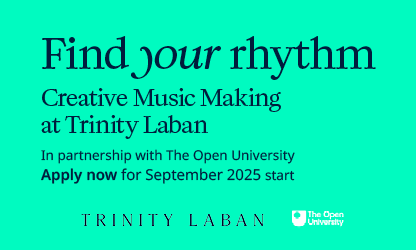Missing out on great music
The latest research by Donne, Women in Music shows the disparity between male and female composers and global majority composers within the global concert repertoire. It calls attention to the need for diversity across classical music.
Friday 30 September was an important day in the music diary; Donne, Women in Music published its free annual report, which looks into how much of 111 global orchestras’ repertoire in the last year was composed by women. It also includes statistics for global majority* composers of either sex and non-binary composers.
The data is shocking, only 7.7% of scheduled works were composed by women. However, the good news is that it’s 50% more than the previous year! At that rate, gender parity in programming will be achieved around 2026… which isn’t that far away (my glass is half full).
The report also tells us that fewer than a third of those are non-white women and that only 4.5% of all programmed works were written by global majority men composers.
Further unsurprising statistics reveal that 76.4% of all pieces were written by dead white men – and you will know the top 10 of those who account for 27.5% of all repertoire played: Beethoven, Mozart, Tchaikovsky, Brahms, Dvorak, Stravinsky, Richard Strauss, Shostakovich, Sibelius, Ravel.
Is there anything wrong with that? We love those guys and their tunes!
Yep, me, too! But….
52% of the world’s population identifies as female. And you want them in your auditorium. Perhaps they will be more inclined to come if they recognise themselves on the concert platform?
Especially the younger ones - consider the statistics. Two-thirds of consumers (and even more for young age groups) now make purchasing decisions based on how inclusive they perceive a company to be.
But most importantly, surely not drawing on or celebrating the creativity of half the world’s population is a recipe for missing out on incredible music and sounds which we could all enjoy performing and listening to.
Having said all that, of course there’s nothing wrong with enjoying these guys’ amazing music! It’s about balance. Dead, living, male, female, non-binary, white, global majority… they all can, do and have produced great music. But we only know a fraction of it because only a fraction is performed in our concert halls, played on our radio stations and available for us to buy and hire and practise with our groups.
So where is this music by women and global majority composers?
For example, find thousands of women composers on Donne UK’s website where you can filter by century, type of composition and alphabetically. In the 18th century alone, there are 53 female composers of orchestral, chamber orchestra and choral music for you to explore.
This may open up a whole world of composers from your favourite music eras who aren’t just the top ten men. Female or global majority composer does not necessarily mean living composer or composer of contemporary sounds your group–or–audience–may–not–be–so–comfortable–with!
And your best friend for sampling this music is undoubtedly the internet these days - try YouTube or BBC Sounds or this resource from German TV.
And how do we find sheet music for these composers?
That is indeed sometimes difficult. Top tips include starting with the easy ones whose music you can source from your normal places; starting earlier than usual in tracking down the material; contacting performers of such repertoire, e.g. other groups.
Of course, try IMSLP, where you can look at or download copyright material for free. Or CPDL for choral music.
And here are some more suggestions both for research and actual music from our event Are You Programming Women Composers in January 2022 (watch the recording):
- Information about other organisations of composers and works - Amplify
- Publishers of sacred music by women - Multitude of Voyces
- The F-list for women – over 1000 (living) female composers
- There are 19 women composers on Composers’ Edition list
- Discovering Choral Music by Women from the Past - Olivias Park Hall
- The Ambache Charitable Trust - provides help with repertoire and funding
- Making Music's repertoire - re-scored pieces from member groups
- Contemporary Music for All - hire affordably
- Elektra Women's Choir - List of women composers
- Search for vocal music - Musica - Making Music members get full access
Well, you did ask!
Will our audiences come, though?
Do you have enough audiences right now? Are your concerts sold out? If the answer is yes, you clearly have a winning programming formula which you should probably stick with...
But I suspect many of you don’t. And that you might fear changing the repertoire to include works your existing audience may be unfamiliar with could mean losing (some of) them. However, might you gain new audiences? Younger audiences? Female audiences? Global majority audiences?
It’s all about balance – for performers and audiences. But that balance currently does not exist, so embracing some change surely will not just bring challenges but new opportunities and much new musical joy.
*Global majority is a collective term that first and foremost speaks to and encourages those so-called to think of themselves as belonging to the global majority. It refers to people who are Black, Asian, Brown, dual-heritage, indigenous to the global south, and or have been racialised as 'ethnic minorities'. (Leeds Beckett University)
Barbara Eifler
Chief Executive of Making Music
Visit Donne | Women in Music's website to find out more about their research and the work they do
Keep up to date with the organisation by following them on Twitter, Facebook and Instagram



